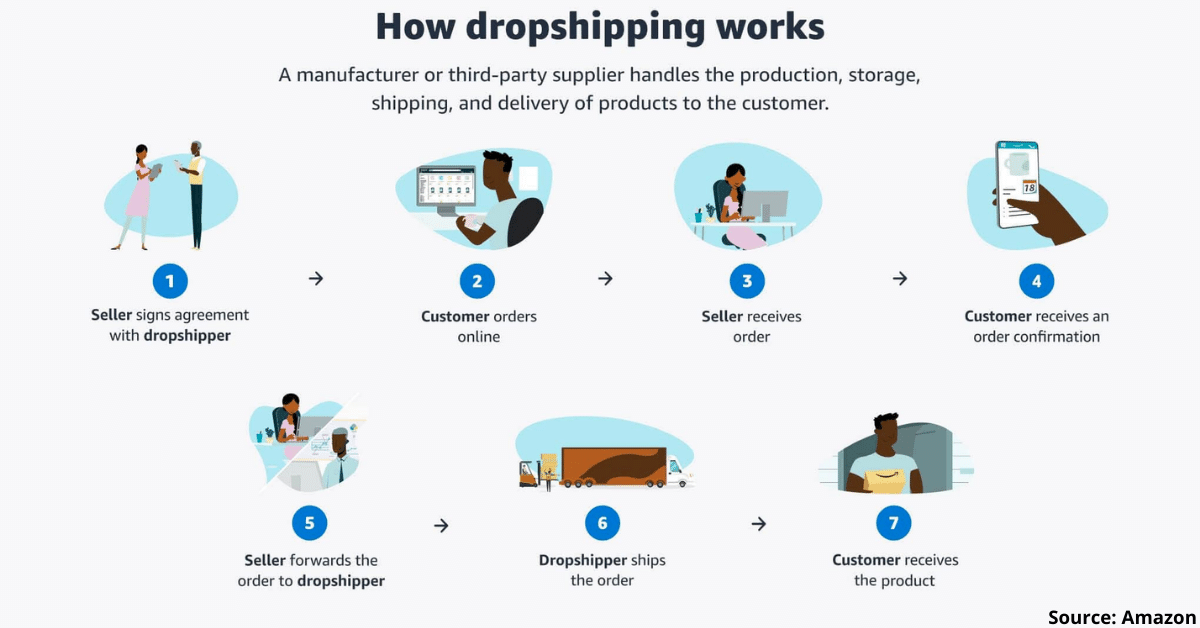In the ever-evolving world of e-commerce, dropshipping has emerged as a popular business model for entrepreneurs looking to start an online store with minimal upfront investment. But what exactly is dropshipping, and how does it work? In this article, we’ll break down the concept, explore its benefits and challenges, and provide a step-by-step guide to help you understand how to get started.
What Is Dropshipping?
Dropshipping is a retail fulfillment method where a store doesn’t keep the products it sells in stock. Instead, when a store sells a product, it purchases the item from a third-party supplier (usually a wholesaler or manufacturer) and has it shipped directly to the customer. This means the seller never physically handles the product, eliminating the need for inventory storage, warehousing, or large upfront investments.
In simpler terms, the dropshipping model acts as a middleman between the customer and the supplier. The store owner focuses on marketing and customer service, while the supplier handles inventory management, packaging, and shipping.
How Does Dropshipping Work?
The dropshipping process involves three main parties: the customer, the online store (you), and the supplier. Here’s a step-by-step breakdown of how it works:
- Set Up Your Online Store
You create an e-commerce store using platforms like Shopify, WooCommerce, or BigCommerce. You list products on your store, often sourced from suppliers or wholesalers who offer dropshipping services. - Customer Places an Order
A customer visits your online store, selects a product, and places an order. They pay the retail price you’ve set for the item. - You Forward the Order to the Supplier
Once the order is placed, you purchase the product from your supplier at a wholesale price. You provide the supplier with the customer’s shipping details. - Supplier Ships the Product
The supplier packages and ships the product directly to the customer on your behalf. The customer receives the product as if it came directly from your store. - You Earn the Profit
The difference between the retail price (what the customer paid) and the wholesale price (what you paid the supplier) is your profit.
Advantages of Dropshipping
- Low Startup Costs
Since you don’t need to purchase inventory upfront or manage a warehouse, the initial investment is significantly lower compared to traditional retail models. - Easy to Start
With platforms like Shopify and Oberlo, setting up a dropshipping store is relatively simple, even for beginners. - Flexibility
You can run your dropshipping business from anywhere with an internet connection, making it a great option for digital nomads. - Wide Product Selection
You can offer a variety of products without worrying about storage space, as your supplier handles inventory. - Scalability
As your business grows, you can easily add more products or expand into new niches without the logistical challenges of managing physical inventory.
Challenges of Dropshipping
While dropshipping offers many benefits, it’s not without its challenges:
- Lower Profit Margins
Since you’re competing with other dropshippers and retailers, profit margins can be slim, especially in saturated markets. - Supplier Dependence
Your reputation depends on your supplier’s reliability. If they make mistakes in shipping or product quality, it reflects poorly on your business. - Shipping Complexities
If you work with multiple suppliers, coordinating shipping times and costs can become complicated. - Customer Service Issues
Since you don’t control the fulfillment process, resolving issues like returns or damaged goods can be challenging. - High Competition
The low barrier to entry means many people are starting dropshipping businesses, making it harder to stand out.
How to Start a Dropshipping Business
If you’re ready to dive into the world of dropshipping, here’s a step-by-step guide to help you get started:
- Choose a Niche
Select a niche that aligns with your interests, has demand, and isn’t overly saturated. Research trending products using tools like Google Trends or Oberlo. - Find Reliable Suppliers
Partner with reputable suppliers who offer quality products and reliable shipping. Popular platforms include AliExpress, Spocket, and SaleHoo. - Set Up Your Online Store
Use an e-commerce platform like Shopify to create your store. Customize your store’s design, add products, and set up payment gateways. - Optimize for SEO and Marketing
Drive traffic to your store through search engine optimization (SEO), social media marketing, and paid advertising. - Monitor and Scale
Track your sales, customer feedback, and supplier performance. As your business grows, consider expanding your product range or exploring new marketing strategies.
Is Dropshipping Right for You?
Dropshipping is an attractive option for aspiring entrepreneurs who want to start an online business with minimal risk. However, success requires careful planning, market research, and a commitment to providing excellent customer service. While it’s not a get-rich-quick scheme, dropshipping can be a profitable venture if approached strategically.
Conclusion
Dropshipping has revolutionized the way people start and run online businesses. By eliminating the need for inventory management and reducing upfront costs, it offers a low-risk entry point into the world of e-commerce. However, like any business model, it comes with its own set of challenges. By understanding how dropshipping works and taking the time to build a solid foundation, you can turn this business model into a successful and sustainable venture. Whether you’re a seasoned entrepreneur or a beginner, dropshipping offers endless opportunities to explore and grow in the digital marketplace.
